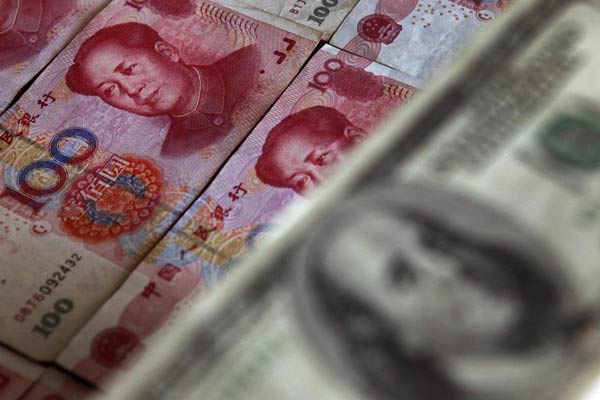Managing debt in an overleveraged world
Updated: 2016-05-13 08:06
By MICHAEL SPENCE(China Daily)
|
||||||||
 |
|
A photo illustration shows a $100 banknote placed above Chinese 100 yuan banknotes in Beijing in May 10, 2013. [Photo/Agencies] |
Whatever happened to deleveraging? In the years since the 2008 global financial crisis, austerity and balance-sheet repair have been the watchwords of the global economy. And yet today, more than ever, debt is fueling concern about growth prospects worldwide.
The McKinsey Global Institute, in a study of post-crisis debt trends, notes that gross debt has increased about $60 trillion-or 75 percent of global GDP-since 2008. China's debt, for example, has increased fourfold since 2007, and its debt-to-GDP ratio is some 282 percent-higher than in many other major economies, including the United States.
A global economy that is levering up, while unable to generate enough aggregate demand to achieve potential growth, is on a risky path. But to assess how risky, several factors must be considered.
First, one must consider the composition of the debt across sectors (household, government, non-financial corporate, and the financial sector). After all, distress in these sectors has very different effects on the broader economy.
As it turns out, economies with similar and relatively high levels of gross debt relative to GDP exhibit sharp differences when it comes to the composition of the debt. Excessive household debt is particularly risky, because a shock in the price of assets (especially real estate) translates quickly into reduced consumption, as it weakens growth, employment, and investment. Recovery from such a shock is a long process.
The second factor to consider is nominal growth-that is, real growth plus inflation. Today, real growth is subdued and may even be slowing, while inflation is below target inmost places, with some economies even facing the risk of deflation. Because debt is a liability for borrowers and an asset for creditors, these trends have divergent effects, increasing value for the asset holder, while increasing the liability of the debtor. The problem is that, in a low growth environment, the probability of some form of default rises considerably. In that case, nobody wins.
The third key factor for assessing the risk of growing debt is monetary policy and interest rates. Though no one knows exactly what a "normal" interest-rate environment might look like in the post-crisis world, it is reasonable to assume that it will not look like it does today, when many economies are keeping rates near zero and some have even moved into negative territory.
Sovereigns with high and/or rising debt levels may find them sustainable now, given aggressively accommodative monetary policy. Unfortunately, though such accommodation cannot be sustained forever, today's conditions are often viewed as semi-permanent, creating the illusion of stability and reducing the incentive to undertake difficult reforms that promote future growth.
The final, and arguably most important, factor shaping debt risk relates to investment. Increasing debt to sustain current consumption, whether in the household or government sector, is rightly viewed as an unsustainable element of a growth pattern. Here, China's case is instructive.
- Global health entering new era: WHO chief
- Brazil's planning minister steps aside after recordings revelation
- Vietnam, US adopt joint statement on advancing comprehensive partnership
- European border closures 'inhumane': UN refugee agency
- Japan's foreign minister calls A-bombings extremely regrettable
- Fukushima impact unprecedented for oceans: US expert

 Stars of Lijiang River: Elderly brothers with white beards
Stars of Lijiang River: Elderly brothers with white beards
 Wealthy Chinese children paying money to learn British manners
Wealthy Chinese children paying money to learn British manners
 Military-style wedding: Fighter jets, grooms in dashing uniforms
Military-style wedding: Fighter jets, grooms in dashing uniforms
 Striking photos around the world: May 16 - May 22
Striking photos around the world: May 16 - May 22
 Robots help elderly in nursing home in east China
Robots help elderly in nursing home in east China
 Hanging in the air: Chongqing holds rescue drill
Hanging in the air: Chongqing holds rescue drill
 2.1-ton tofu finishes in two hours in central China
2.1-ton tofu finishes in two hours in central China
 Six things you may not know about Grain Buds
Six things you may not know about Grain Buds
Most Viewed
Editor's Picks

|

|

|

|

|

|
Today's Top News
Liang avoids jail in shooting death
China's finance minister addresses ratings downgrade
Duke alumni visit Chinese Embassy
Marriott unlikely to top Anbang offer for Starwood: Observers
Chinese biopharma debuts on Nasdaq
What ends Jeb Bush's White House hopes
Investigation for Nicolas's campaign
Will US-ASEAN meeting be good for region?
US Weekly

|

|









